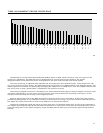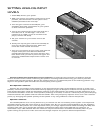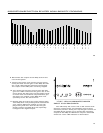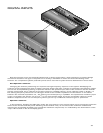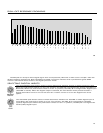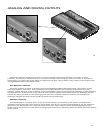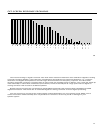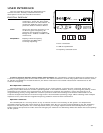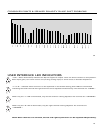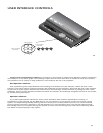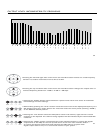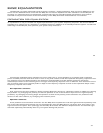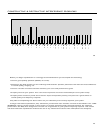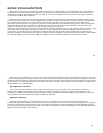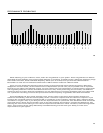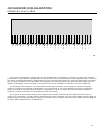
BASIC EQUALIZATION
When given the choice of boosting certain frequencies or cutting others, it is always better to cut frequencies.
Boosting the equalizer requires the amplifier to produce more power. Boosting the equalizer 6dB is asking the
amplifier to produce 4 times the power. It is easy to see how an amplifier can be overdriven at higher listening
levels when the DEQ 30 is boosted.
With frequency response irregularities, human hearing is more sensitive to information added as opposed to
taken away. As a result, you can use the DEQ 30 to locate and determine problem frequency areas. To accomplish
this, choose music that you are very familiar with. For best results, choose music that is well recorded with
acoustical instruments such as a piano or guitar and with both male and female singing voices. Also, an excellent
reference system can be a live piano or an excellent sounding home audio system. Become familiar with your
reference and feel free to refer to it to refresh your memory. Using your
reference material, listen to your system at moderate listening levels. Do not choose listening levels too high as this
will affect your results with potential overdriving of your amplifier and listening fatigue. Listening in short
intervals of 15 minutes with rest period of at least 30 minutes will decrease your tuning time by reducing the
possible mistakes in tuning that are made as a result of listening fatigue. As you become more aware of the effects
of listening fatigue, you can better judge the duration of your listening interval to minimize this effect.
Resonance is the tendency of a system to vibrate at a certain frequency when excited by an external force and
remain vibrating after the force is removed. In the car audio environment, resonance frequency response errors are
caused by vehicle acoustics. The lower resonant peaks are most often caused by the interior shape size and volume
of the vehicle. The high frequency resonant peak are often found in vehicles where the tweeters are located near
glass (windows and windshields).
Non-equalizer solutions
First try to see if the problem area is near a crossover point in your system. If so, try different crossover
frequencies, staggered frequencies and different polarity of drivers to see if this improves the situation. For
resonance problems in the high frequency tweeter range, try different tweeter angles and positions to see what
improvements can be made to the system frequency response.
Equalizer Solutions
Second, use the DEQ 30 as a cut only device to try to smooth out the non-linearity of the system. Cut
frequencies gradually starting with the center point of the problem area. Do not cut the centered band to get the
frequency response to the flat position for it will dip below when you changes adjacent bands. Periodically listen
to your system during this process to make sure that the changes you make equalizing do not adversely affect the
detail and sound quality of the system.
24
29



